
Racing Signals: Sailing Flag Meanings

Last Updated by
Gabriel Hannon
August 30, 2022
Where other competitions have umpires and referees right next to the players, sailing race committees have to rely on flags to communicate with sailors.
In this article, we are going to explain the meanings of all the flags used at regattas to communicate with sailors. The flags can give information about starting procedures, course information, and on-the-water judging, so a basic understanding is a crucial part of general seamanship.
While nautical flags all have defined meanings in a historical context, they have very specific meanings in the context of racing competition. For instance, in the general nautical world, the Z-flag means that you are in distress and are in need of a tow or relief from a tug boat. At a regatta, the race committee may fly the Z-flag to indicate an additional penalty for any boat that has crossed the line early. Moreover, even though there are certain flags that have well-defined roles, race committees may stipulate additional meanings or introduce new flags via an announcement in the sailing instructions for the event, so we will cover some of these more common changes as well. We will break down the meanings into the various categories of usage.
A secret that I have learned over many years of regattas at every level from proverbial ‘beer-can’ races to national championships is that, as well as both you and the race committee can recite the racing flag rules on land, someone is always going to make a mistake or misunderstand these symbols. That is why I will be going through the official flag meanings and rules from the Racing Rules of Sailing for 2021-2024 to clarify any questions that you might have when the race committee flies a flag that hasn’t been seen since we used Clipper Ships to cross the oceans. Hopefully this article will help break down all the most common signals so that when your friend turns to you and asks ‘is that the flag that tells us it's time to go in,’ you’ll be able to help out!
Table of contents

Flags at the Start
The start of a race is often the most confusing part of a regatta and is where the most flags must be used. We will be going over the rules for the flags at a basic 5-minute start. These can be modified for 3-minute dinghy starts, 5-minute match race starts, 6-minute Olympic starts, or 10-minute big boat starts, but the same logic applies.
A few flags are crucial to set everything up on the starting line prior to the starting sequence.

To begin, the race committee must have an Orange Flag visibly displayed, as this demarks the exact location on the boat from which the line is called. If there is a pin boat, they will often fly an Orange Flag as well, but if it is just a buoy, then the buoy serves as the other end of the line.

Next, the RC will additionally fly the L Flag if they are ready for competitors to check-in at the beginning of the race day. This helps them confirm that everyone is sailing under the correct sail number, which is often a logistical nightmare. They will blow one horn when raising this flag. If this flag is raised at any point later in the day, it is meant to tell competitors to come by the committee boat again.

Finally, the AP Flag is a general purpose postponement flag. The race committee may raise this on land to indicate that the harbor start has been delayed or on the water to indicate that there will be a delay in the starts. While there are other flags that are used for abandonment situations, particularly the N Flag, the AP is commonly used in informal situations. Two sounds accompany the raising of the AP, and it can be said that competitors are ‘under AP’ until it is dropped, along with one sound. If it is dropped on land, competitors may immediately launch. If it is dropped on the water, the next start may begin in as little as one minute.

The final note with the AP Flag is that the race committee may indicate the end of racing for the day by flying ‘AP over A.’ Again, the AP could technically be replaced with the blue and white checkerboarded N Flag, but the two serve very similar purposes at most levels.
Starting Flags

Once the race committee is set up and everyone is ready to go sailing, the next task is to get the right fleets to the starting line for their start. At the warning signal, one loud horn that indicates that the 5-minute countdown to the start has begun, the race committee will raise some type of Class Flag that indicates which type of boat will be starting. Above we have the different class flags for the different competition rigs for the ILCA-Dinghy, formerly known as the Laser, which would be raised to indicate which rig is starting.

This is a convention even if there is only one class on the water. Sometimes this is replaced with raising the Orange Flag itself, or some other flag as laid out in the sailing instructions. Often classes have been assigned a numeral pennant, of which 1-4 are displayed above, in place of the highly specific Class Flags. Still, some flag of this nature goes up at 5-minutes and remains up until go, at which point it is dropped.

At 4-minutes, the RC will sound another horn, known as the preparatory signal, and raise some combination of the above flags.
The P Flag is always required to go up, and it is simply the ‘Prep Flag,’ which signals to the racers that they need to get serious about the race. Once the P Flag is raised, all the right-of-way rules that apply during the start switch on and racers, particularly in team and match racing, are allowed to begin tactically engaging with each other (though in team racing this would happen at minute 2 of the 3-minute start). Moreover, racers can talk with their coaches until the prep signal, and race committees may alter the course up until this moment. Afterwards, all coaching is banned and all course changes on the current leg are not allowed. This belies the fact that a 5-minute starting sequence is actually a 4-minute sequence with a warning signal at 5-minutes, but that is a purely semantic detail.
Depending on how rowdy the competitors are, the race committee may raise any combination of the I, Z, U, or Black Flags. Each of these flags deals with boats that start ‘on-course side’ (OCS), essentially a false start for sailing. If any of these flags is raised, a boat is not allowed to be anywhere within the triangle formed by the starting line and the first mark of the course after the 1-minute signal during the start. These flags essentially help the RC ensure that they can get off a clean start and ensure that they can identify any boats that are OCS at go. When they are flown, the following penalties are added beyond requiring a boat to clear itself by dipping back under the line:
- I Flag: Conventionally referred to as the ‘one-minute rule,’ this requires that any boat over the line after a minute also has to sail around an end of the line in order to start the race fairly. This punishes a boat for being over by potentially making it a little harder to clear themselves if they are over on a large line.
- Z Flag: Often flown in combination with the I Flag, this flag adds that any boat that is OCS will get a 20% penalty on top of their score in that race, regardless of whether they clear themselves or not. This further hurts any boat that is ‘pushing the line’ by ensuring that even if they manage to clear themselves and come back, they will still see an impact on their scoreline that is equivalent to immediately being passed by 20% of the fleet.
- U Flag: Now we’re getting into harsh territory. When the RC is really trying to brush the fleet back off the plate, this flag immediately disqualifies a boat that is over after a minute with no course for redress. If these boats are identified, they tend to be told to stop sailing the race by a notice board at the top mark.
- Black Flag: The black flag serves a very similar purpose to the U Flag, except it is a step harsher. It disqualifies you after a minute and even prevents you from sailing in a restart of the race or a race abandoned halfway through.
The I Flag is by far the most common flag, and is often effective at keeping boats from being over. The U Flag rule was introduced in 2013 as an option and formally codified in the Racing Rules in 2017 and is massively more popular than the Black Flag, which is considered overly punitive. In particular, when many sailors are over in a Black Flag start, such that the RC cannot determine who was over, they are forced to make unfair decisions that carry over to the restart, so the U is now almost universally used in its place. Additionally, as the U has become more popular, people tend to shy away from the Z flag, which is considered cumbersome for scorers and confusing to sailors.
In general, while these flags are supposed to be raised in conjunction with the P Flag, often the RC will only raise the most punitive of the flags, as any of them can essentially be considered as a prep flag.
As the starting sequence continues, any prep flag(s) raised must be lowered at the 1-minute signal. The class flag is then lowered at go, leading to the next category of flags: Recall Flags
Recall Flags
After the pain of raising and lowering all those start flags, the RC then has three possible jobs. If the start is clean, they shout ‘All Clear!’ and can then relax until they have to start another race or record finishes for the race in progress. Unfortunately, this is often not the case, as they likely will need to ‘recall’ certain competitors for being ‘OCS,’ i.e. false starting. They have two choices here.

If only a few, easily-identifiable boats have started early, the RC will raise the X Flag along with a single sound in what is referred to as an individual recall. This indicates to the boats on the course that there are some competitors who are currently OCS and must clear themselves. If the I Flag had been flown for the start, competitors have to round an end; if not, they can just dip back behind the starting line and restart from there.
While the X is suitable on its own to inform a boat that it has been called over, it is an oft practiced courtesy for the RC to hail an OCS boat’s sail number over a megaphone, a radio, or other transmission device. The X Flag is dropped when all OCS boats have cleared themselves or after 4 minutes from go, whichever comes first.

If more boats than can be easily identified are called over, the RC can blow two horns and fly the First Substitute Flag, indicating a general recall. In this case, the race is fully reset and the committee will initiate another entire starting sequence for that fleet. After a general recall, the RC will often, but not always employ the next level of penalty flag for the restart in an attempt to get the race off cleanly.
Sometimes, as in college sailing or as stipulated by other sailing instructions, any general recall immediately implies the I Flag for the next sequence if it had not been flown previously. As such, the RC does not necessarily have to fly the I if it is unavailable. Still, such stipulations are almost always written out explicitly for a given event and are often accompanied by a verbal announcement as a courtesy.
Still, outside some usages of the AP or N Flags to abandon or delay starts already in sequence, these are all the flags that deal with general housekeeping and the starting sequence.
While Underway
While the starting flags are by far the most complicated of the flag rules, there are still other flags to keep track of while racing. The first among these are...
Course Change Flags
Although course changes are relatively rare, race committees often pull them out when conditions change substantially during races or if there has been a problem with one of the marks.

When wind or time constraints require, the race committee may send an official to any mark of the course that no boat has yet rounded and have it raise the S Flag along with two sounds. This indicates that the fleet shall finish at that mark, cutting off the race earlier than written in the sailing instructions.

In the case of any other change to the course, such as a minor adjustment to the angle or distance of an upcoming leg, a race committee boat will go to the preceding mark and raise the C Flag along with repeated sounds.
This is sometimes accompanied by a Red Square or a Green Triangle to indicate that the mark has been moved to port or starboard respectively. Although during less formal events, you can change the positions of any marks so long as there are no competitors currently sailing on that leg of the course, it is considered poor form if at all possible to inform competitors, particularly in longer races. Sailors make decisions based on the position of the marks, and if this has been changed without them noticing, that can drastically affect the outcomes of strategic decisions, so in large competitions the C Flag is a must.

If, meanwhile, something odd has happened to a mark of the course, any official boat may fly the M Flag with repeated signals. This serves to inform the competitors that they have become a replacement for the missing mark. This is relatively uncommon, but anchors do occasionally snap on marks, so it is always good to have a support boat with the M if possible.

Finally, as mentioned before, if conditions have deteriorated to the point that a race is considered no longer possible, due to lack of wind, fear of foul weather, or some form of interference -- I’ve seen it happen because cruise ships wanted to pass through a dinghy course, and you don’t say no to them -- the race committee may abandon the race using the N Flag. Still, this flag is relatively rare as you will often see the AP in its place for convenience, as they are functionally similar.
Miscellaneous Flags
While we have covered the bulk of the flags necessary for racing at any level, there are a few more flags from across different disciplines and classes that are worth mentioning, if only to let you in on these quirky parts of the racing world! This starts with what one could reasonably call…
The Cheating Flag

Calling the O Flag the cheating flag is certainly a bit of a misnomer. The O Flag does, however, suspend Rule 42 of the Racing Rules of Sailing. Rule 42 is particularly notorious, as it bans pumping, rocking, ooching, sculling, and excessive maneuvering, all of which are methods to make your boat go substantially faster. While Rule 42 is worth an article in and of itself, the larger point is that it is meant to keep anyone from gaining an unfair advantage over their competitors.
Certain competitive classes, however, including the Olympic class 470s and Finns and many of the new foiling fleets, allow competitors to ignore Rule 42 in certain conditions, typically in heavy breezes that are referred to as ‘planing’ conditions. There are differences across the classes, but whenever it is allowed and the RC flies the O Flag, Rule 42 is switched off and competitors can ooch, pump, rock, and tack their boats all around the racecourse. This allows for a much more physical style of sailing and is a rule that many different classes and sectors of sailing are beginning to consider.

If conditions no longer meet the threshold for that class’s rules regarding suspension of Rule 42, an official boat will raise the R Flag at some point during the race. They can only do so at a mark of the course so that it is fair to all the competitors throughout the fleet. This is relatively rare, and is normally done between races, but is still a key part of the O Flag rule.
Judge and Umpire Flags
On the topic of Rule 42, there are certain fouls in sailing that can be actively enforced on the water by judges or umpires, depending on the context.
Rule 42 is enforced by judges with a Yellow Flag, which they will point at an offending boat along with a sound signal and a direct sail number hail. That boat may clear themselves from their first Yellow Flag by taking their two-turn penalty, but, unless otherwise noted in the sailing instructions, any subsequent violation can entail disqualification.
Finally, certain levels of modern match and team racing, with the addition of high-performance racing like SailGP, have full on-the-water umpires who actively follow the racing to make calls on fouls and other plays. While this is not the spot to go through the intricacies of team and match race calls, the basic gist is as follows.
In any interaction, any boat involved in the race may call in the umpires if they believe that their opponent has fouled them. If the opponent clears themselves quickly, essentially admitting fault, the umpires will not get involved. If no boats clear themselves, the umpire has to make a call on whether there has been a foul. If they determine that the maneuvers were clean, they will make one sound and fly a Green Flag, thus exonerating all boats in the interaction. If they determine there was a foul, they will fly a Red Flag with a singular sound and hail the offending boat.
Beyond that, if a boat is found to have broken a rule not related to an interaction, the umpires may come in and fly the Red Flag without being directly invited into the situation. Further, if a boat is found to be in violation of sportsmanship or refuses to take a penalty as assessed by an umpire, the umpire may fly a Black Flag, disqualifying them from the race.
While there are differences at each event and in each discipline, these general guidelines are followed in most umpired races, with specific flags used at various events, generally depending on availability.
With that, we have made it from land, through the start, a few general recalls, all the way to umpire flags! I hope this has helped you get a grasp of the various flags used across sailing. While this has not scratched the specifics of the various alterations made for kiteboards and windsurfers, nor some of the annoyances of protest flags and more, we have gone through the bulk of regularly used race committee and umpire signals.
The ‘Wear Your Life Jacket!’ Flag

Finally, we have a safety flag. At big boat regattas, the race committee may, if it chooses, fly the Y Flag at any point prior to a start to inform competitors that they must wear personal floatation devices, which is not always strictly necessary.
The Most Important Flag
While I wish I could tell you that everyone uses their flags properly and accompanies them with the proper timing and sound signals, that is far from the truth. Everyone’s flag set is slightly incomplete or out of date, and invariably there is going to be a miscommunication somewhere, where the race committee forgets to put the I Flag up but really should have; I’ve certainly done that a time or two. Still, there’s nothing quite like being on the water, so, despite the endless mutual griping between racers and their race committees, hopefully everyone comes back to shore flying the ‘Happy Flag.’
Happy sailing!
Related Articles
I have been sailing since I was 7 years old. Since then I've been a US sailing certified instructor for over 8 years, raced at every level of one-design and college sailing in fleet, team, and match racing, and love sharing my knowledge of sailing with others!
by this author
Most Recent

What Does "Sailing By The Lee" Mean?
Daniel Wade
October 3, 2023

The Best Sailing Schools And Programs: Reviews & Ratings
September 26, 2023
Important Legal Info
Lifeofsailing.com is a participant in the Amazon Services LLC Associates Program, an affiliate advertising program designed to provide a means for sites to earn advertising fees by advertising and linking to Amazon. This site also participates in other affiliate programs and is compensated for referring traffic and business to these companies.
Similar Posts

How To Choose The Right Sailing Instructor
August 16, 2023

Basics Of Sailboat Racing Explained
May 29, 2023

Cost To Sail Around The World
May 16, 2023
Popular Posts

Best Liveaboard Catamaran Sailboats
December 28, 2023

Can a Novice Sail Around the World?
Elizabeth O'Malley
June 15, 2022

4 Best Electric Outboard Motors

How Long Did It Take The Vikings To Sail To England?

10 Best Sailboat Brands (And Why)
December 20, 2023

7 Best Places To Liveaboard A Sailboat
Get the best sailing content.
Top Rated Posts
Lifeofsailing.com is a participant in the Amazon Services LLC Associates Program, an affiliate advertising program designed to provide a means for sites to earn advertising fees by advertising and linking to Amazon. This site also participates in other affiliate programs and is compensated for referring traffic and business to these companies. (866) 342-SAIL
© 2024 Life of Sailing Email: [email protected] Address: 11816 Inwood Rd #3024 Dallas, TX 75244 Disclaimer Privacy Policy
Table of Contents

- because of foul weather,
- because of insufficient wind making it unlikely that any boat will Definition: Finish " data-url="/definitions/76?xformat=fleet" href="javascript:void(0)">finish within the race time limit,
- because a Definition: Mark " data-url="/definitions/70?xformat=fleet" href="javascript:void(0)">mark is missing or out of position, or
- for any other reason directly affecting the safety or fairness of the competition,
- a line the course requires boats to cross; or
- at a gate, between the gate Definition: Mark " data-url="/definitions/70?xformat=fleet" href="javascript:void(0)">marks .

- the new compass bearing or
- a green triangle for a change to starboard or a red rectangle for a change to port.
- Subsequent legs may be changed without further signalling to maintain the course shape.
- replace it in its correct position or substitute a new one of similar appearance, or

- prohibit a boat from competing unless she has broken rule Rule: 30.4 " data-url="/rules/1569?xformat=fleet" href="javascript:;">30.4 ; or
- cause a boat to be penalized except under rule Rule: 2 " data-url="/rules/1150?xformat=fleet" href="javascript:;">2 , Rule: 30.2 " data-url="/rules/1544?xformat=fleet" href="javascript:;">30.2 , Rule: 30.4 " data-url="/rules/1569?xformat=fleet" href="javascript:;">30.4 or Rule: 69 " data-url="/rules/1626?xformat=fleet" href="javascript:;">69 or under rule Rule: 14 " data-url="/rules/1320?xformat=fleet" href="javascript:;">14 when she has caused injury or serious damage.

Previous Versions
Last updated.
| Rules | ||
|---|---|---|
| Racing Rules of Sailing for 2013-2016; Version 6 | December 2015 | |
| Racing Rules of Sailing for 2017-2020 | August 2017 | |
| Racing Rules of Sailing for 2021-2024 | December 2020 | |
| Prescriptions | ||
| Australia | July 2017 | |
| Canada | November 2019 | |
| Great Britain - RYA has declined to grant a license for prescriptions and cases. | November 2019 | |
| New Zealand | July 2017 | |
| United States | February 2017 | |
| Cases | ||
| World Sailing Cases | February 2022 | |
| World Sailing Q&As | March 2022 | |
| Match Race Calls | January 2020 | |
| Match Race Rapid Response Calls | October 2018 | |
| Team Race Calls | December 2018 | |
| Team Race Rapid Response Calls | February 2016 | |
| CAN Cases | October 2017 | |
| RYA Cases | November 2019 | |
| US Appeals | November 2019 | |
| Manuals | ||
| World Sailing Judges Manual | December 2019 | |
The Ultimate Guide to Yacht Racing Rules and Regulations
- by yachtman
- September 6, 2023 June 22, 2024

Yacht racing is an exciting sport! It requires skill, accuracy, and knowledge of rules . These regulations guarantee fair play and safety. To really appreciate the activity, you must understand the regulations.
At first, navigating the rules may seem intimidating. But breaking them down into chunks makes it easier. One important point is the hierarchy between boats. It shows which boat should give way in different situations.
It’s also important to know the race signals. They communicate crucial info, such as race starts and course changes. Participants and spectators need to know these.
Stay updated on any rule changes or amendments issued by World Sailing . They refine existing regulations and add new ones to improve the sport. Knowing the latest rules will give you confidence.
Finally, read case studies of past incidents/disputes during yacht races. This way you can learn from mistakes and be ready for unexpected situations.
Understanding the Basic Rules of Yacht Racing
Understanding the Fundamental Regulations of Yacht Racing
Yacht racing involves a set of basic rules and regulations that govern the competition. These rules are essential for ensuring fair play and safety on the water. To help you understand the fundamental regulations of yacht racing, here is a beginner’s guide to yacht racing :
- Start Line Procedure: Before the race begins, all yachts must line up at the designated starting line. This line is typically marked by buoys or flags, and competitors must position themselves according to the rules specified by the race committee.
- Right of Way: Yacht racing follows a set of right-of-way rules that determine which yacht has precedence in certain situations. For example, a yacht on a starboard tack (wind coming from the right side) usually has right of way over a yacht on a port tack (wind coming from the left side).
- Mark Roundings: Yacht courses often include marks, such as buoys or flags, that competitors must round during the race. The rules specify how yachts should approach and pass these marks to ensure fair competition and prevent collisions.
- Protests and Penalties: If a competitor believes that another yacht has violated the rules, they can file a protest with the race committee. The committee will then investigate the incident and may impose penalties on the offending yacht if the protest is upheld.
- Finishing Line: The race concludes at the finishing line, which is typically marked by buoys or flags. Yachts must pass this line in the correct direction and often have to radio or signal their finish time to the race committee.
These steps outline the key elements of understanding the fundamental regulations of yacht racing. It’s important to familiarize yourself with these rules to ensure a safe and fair competition.
Pro Tip: Before participating in a yacht race, take the time to thoroughly study and understand the specific rules and regulations for that event. This will help you navigate the race effectively and avoid unnecessary penalties.
Get ready to navigate through a sea of confusing jargon as we dive into the essential terminology of yacht racing – it’s like learning a new language, but with more wind in your sails.
Essential Terminology in Yacht Racing
Yacht racing requires a unique language to be mastered by all sailors. Knowing these terms is essential for successful communication and cooperation during races.
Check out some of the key vocab words used in yacht racing:
| Term | Definition |
|---|---|
| Beam | Width of boat at widest point. |
| Buoy | Floating marker to show a point on race course. |
| Mast | Vertical spar holding up sails. |
| Tacking | Turning the bow through wind, changing sails’ sides. |
| Jib | Triangular sail at front of boat. |
| Windward | Direction from which wind blows. |
| Leeward | Direction away from wind blowing, opposite to windward. |
Plus, other crucial terms like “luffing” (sail fluttering due to lack of wind), “tiller” (lever for steering boat) and “hull speed” (maximum speed a boat can reach in water).
Pro Tip: Get to know these essential yacht racing terms to up your enjoyment of this exciting sport!
Key Rules and Regulations for Yacht Racing
Yacht Racing: A Comprehensive Guide to Rules and Regulations
The rules and regulations governing yacht racing are crucial for ensuring fair and competitive events. Understanding these guidelines is essential for both participants and organizers to guarantee a level playing field and maintain the integrity of the sport. Below, we have compiled a table highlighting key rules and regulations for yacht racing in an easily accessible format.
Key Rules and Regulations for Yacht Racing:
| Rule Number | Rule Description |
|---|---|
| 1 | Start line procedures must be followed precisely to avoid penalties. |
| 2 | Proper course adherence is mandatory; any deviation may result in disqualification. |
| 3 | Fouls and collisions should be avoided during the race; offenders may face penalties. |
| 4 | Crew size, boat specifications, and safety equipment requirements must be met. |
| 5 | Protest procedures allow competitors to report rule violations, triggering investigations. |
| 6 | Weather conditions may lead to race postponement or cancellation to ensure participant safety. |
| 7 | Time limits are set for each race, and failure to finish within the specified time may result in disqualification. |
| 8 | Right-of-way rules dictate how boats should interact on the water to prevent accidents. |
| 9 | Scoring systems are applied to determine winners based on elapsed time, corrected time, or handicap ratings. |
| 10 | Anti-doping regulations are enforced to maintain the integrity of yacht racing as a clean sport. |
These rules and regulations provide a framework that allows for fair competition and keeps participants safe. However, it is important to note that each race may have additional guidelines specific to the event or location, and participants should familiarize themselves with these unique details.
One such incident in the world of yacht racing involved a team that, due to a technical malfunction, found themselves adrift just moments after the race had begun. With quick thinking and teamwork, they managed to rectify the issue, rejoin the race, and ultimately finished in an impressive third place. This story illustrates the resilience and determination required in yacht racing, where unforeseen challenges can arise at any moment.
Yacht racing rules and regulations are comprehensive and necessary for maintaining fairness and safety. By adhering to these guidelines and being prepared for unexpected circumstances, participants can fully engage in the thrilling and competitive world of yacht racing.
Navigating through the racing course is like playing chess, except the pieces are yachts and the stakes are higher – imagine the drama when someone accidentally knocks over the queen!
Racing Course and Markings
Ahoy, mateys! Hop on board for a wild race on the high seas! It’s time to learn about the racing course : a carefully crafted area for a thrilling competition . Keep your eyes peeled for the start line – it marks the beginning of the race. Then, look out for the turn marks ; these designated points show where sailors must change direction. Finally, the finish line indicates the end of the race.
If ye want to be the best sailor, ye must understand these course and marking details. It’s essential for a successful yacht racing experience, so don’t miss out! Time to set sail and make your mark in the world of yacht racing.
Right of Way and Collision Avoidance
In yacht racing, we must pay close attention to the right of way and collision avoidance. Following specific rules and regulations is key to ensuring a fair race and preventing accidents.
Let’s look at the key rules related to right of way and collision avoidance in yacht racing:
| Rule Number | Rule Description |
|---|---|
| 10 | Left boat must keep clear of right boat |
| 11 | Upwind boat must keep clear of downwind boat |
| 12 | Overtaking boat must keep clear of the one being overtaken |
| 13 | Give-way boat must take early action to keep clear |
These rules are just the beginning of the comprehensive regulations. Now, let’s look at a unique detail. In some cases, when two yachts on different tacks approach a mark, they may have equal rights. It’s important for skippers to communicate and coordinate to avoid possible collisions.
To show the importance of following these rules, here’s a story. During a competitive race, two yachts were nearing a turning point. The skipper of one boat did not yield the right of way, which violated rule number 10. Both boats were damaged and their chances of winning were ruined. This serves as a reminder that even small errors can have big consequences in yacht racing.
Starting and Finishing Procedures
Before the yacht race, boats must gather in the starting area. Skippers must steer clear of any collisions or rule-breaking.
Next comes the starting sequence – with flags or sound signals showing the time until the race starts. Skippers must pay close attention to them.
Once the final signal is given, the yachts race across the start line. Skippers must judge their entry properly to get an advantage and stay within the racing rules.
At the end of the race, the finish line is reached. Skippers should navigate and strategize here to cross it fast while following regulations.
Each race may have different start and finish procedures. Participants must read instructions from race organizers to stick to all rules.
The America’s Cup is one of the oldest sailing competitions. It began in 1851 around the Isle of Wight. It’s a big international event now, with teams competing every few years for the trophy.
Safety Guidelines for Yacht Racing
Safety Measures for Yacht Racing
Yacht racing events prioritize the safety of participants to prevent accidents and mishaps. Here are essential safety guidelines for yacht racing:
- Adhere to proper safety equipment regulations, including life jackets and distress signaling devices.
- Ensure all crew members are familiar with emergency procedures and know the location of safety equipment on the yacht.
- Maintain clear communication channels, using appropriate radio frequencies or signals during the race.
- Regularly inspect and maintain all equipment on board to ensure it is in proper working condition.
- Monitor weather conditions and take necessary precautions, such as altering course or seeking shelter in case of inclement weather.
- Adhere to collision-avoidance rules, maintaining a safe distance from other yachts and objects in the water.
It is important to stay up to date with the latest safety guidelines and regulations in the yacht racing community to ensure the well-being of all participants.
Yacht Racing Safety History:
Throughout the history of yacht racing, safety measures have evolved to enhance participant protection. Collaborations with maritime organizations and advances in technology have led to the development of comprehensive safety regulations and equipment. The efforts have significantly reduced the number of accidents and increased the safety of yacht racing as a sport.
Yacht racing may be a high-stakes sport, but remember, not everyone can pull off the bold fashion statement that is a life jacket.
Personal Safety Equipment
To ensure success in yacht races, it’s important to prioritize safety! All sailors should wear a well-fitted life jacket at all times to provide buoyancy aid. Personal locator beacons transmit distress signals if someone falls overboard. A harness with a tether will keep sailors attached to the boat. Protective clothing, such as gloves, boots and waterproof gear, guards against hypothermia and injuries. Reliable communication devices are necessary for crew members to stay in touch. Also, inspect all safety equipment regularly.
To further enhance safety, organizers can do regular safety drills. Employing support vessels is key for immediate response. Establishing clear communication protocols allows for effective coordination. By following these suggestions, yacht racers can reduce risks and maximize safety levels. Safety equipment and measures are essential elements for successful yacht races!
Safety Precautions on the Water
Yacht racing can be thrilling – but don’t forget to stay safe! Here are some essential tips:
- Always wear a life jacket : No matter how experienced you are, you can never be too careful.
- Check weather conditions: Sudden storms or high winds can make racing conditions dangerous.
- Create a communication plan: Make sure everyone in your crew is informed of any hazards or changes in course.
Plus, don’t forget to research local rules and regulations. Safety should always come first! So, gear up and get ready for a thrilling experience on the water. Enjoy the fun and camaraderie of yacht racing – just remember to stay safe!
Common Penalties and Protest Procedures
Yacht racing penalties and protest procedures involve various rules and regulations that must be followed. To ensure fair competition and resolve any disputes, there are consequences for violations. Here is a breakdown of the common penalties and the procedures for lodging a protest:
| Penalty | Description |
| Time Penalty | A certain amount of time added to the offending boat’s finish time as a consequence of breaking a rule. |
| Disqualification | The offending boat is removed from the race results due to a serious rule violation. |
| Protest | A formal complaint lodged by a boat or its crew against another boat for an alleged rule violation. This initiates the protest procedure. |
| Hearing | A meeting held to assess the validity of a protest and gather evidence from both parties involved. A protest committee determines if a rule violation occurred and assigns penalties if necessary. |
| Appeal | A process that allows a boat to challenge the decision made by the protest committee if they believe it to be unfair or incorrect. |
It’s important to note that each yacht race may have its specific procedures and penalties, so it’s crucial for participants to familiarize themselves with the rules beforehand. This ensures a fair and competitive environment for all racers.
Understanding the common penalties and protest procedures is vital for yacht racers to navigate the intricacies of the sport. By abiding by the rules and properly addressing any issues through the protest process, participants can ensure a level playing field, maintaining the integrity and fairness of yacht racing.
Don’t miss out on the opportunity to compete fairly and enjoy the thrilling experience of yacht racing. Familiarize yourself with the penalties and procedures to avoid any confusion or missed chances. Stay informed and make the most of your yacht racing journey.
“Being disqualified in yacht racing is like being told you’ve won the lottery, but then realizing it’s April Fool’s Day.”
Types of Penalties in Yacht Racing
Penalties in yacht racing are necessary to ensure fairness and compliance with the rules. These penalties act as a deterrent against any wrongdoings or rule-breaking, keeping the sport’s integrity intact.
A descriptive table can help us understand the various types of penalties in yacht racing:
| Penalty Type | Description |
|---|---|
| OCS | On Course Side – Premature start |
| ZFP | Z Flag Penalty – Breaking early start rule |
| PIN | Powerboat Is Near – Insufficient clearance |
| RDG | Redress Awarded – Compensation for unfairness |
| DSQ | Disqualification – Serious rule infringement |
| BFD | Black Flag Disqualification – Aggravated breach |
| DNF | Did Not Finish – Failure to complete race |
These penalties have serious consequences, which act as a warning to sailors not to take any unfair advantages or act dangerously. Knowing these penalties is essential for competing in yacht racing.
Penalties have been part of yacht racing since the beginning. They were put in place to maintain order in races and create a fair playing field. Over time, these penalties have been adapted to fit the changing dynamics of the sport.
A good grasp of the penalties in yacht racing helps competitors perform better on the water. It also promotes sportsmanship and upholds the spirit of fair play in this exciting discipline.
Initiating and Resolving Protests
- Pinpoint the issue .
- Be sure it follows the rules.
- Gather data, facts, and material.
- Create a clear and concise statement.
- Submit the complaint to the right body.
- Talk to the parties.
- Look for a fair outcome through negotiation or mediation.
- Pay attention to deadlines.
- Respect protocols.
- Take charge and protect your rights.
- Act now and make sure your voice is heard!
Strategies and Tactics in Yacht Racing
Strategies and tactics are vital in the world of yacht racing. Understanding the nuances of this sport can make a significant difference in performance. Here, we explore some essential strategies and tactics employed by skilled yacht racers.
| Strategy/Tactic | Description |
|---|---|
| Wind Shifts | Yacht racers closely monitor wind shifts and adjust their course accordingly to gain a competitive advantage. |
| Start Line Strategy | A well-executed start is crucial. Racers carefully position their boats at the start line to maximize their speed and minimize the distance they need to cover. |
| Sail Trimming | Effective sail trimming plays a crucial role in optimizing speed and maneuverability. Yacht racers constantly adjust their sails to adapt to changing conditions. |
| Mark Roundings | Expert racers strategically approach mark roundings to ensure they maintain their position relative to competitors. |
| Tactical Covering | Yacht racers strategically position themselves to cover their opponents, blocking their wind and impeding their progress. |
In yacht racing, there are unique details to consider, such as utilizing current knowledge to select the best racing route. Additionally, understanding the impact of tidal flows and currents can help racers make more informed decisions during a race.
To become a successful yacht racer, it is crucial to study and practice these strategies and tactics diligently. By mastering these techniques, one can maximize their chances of success and stay ahead of the competition.
Don’t miss out on the opportunity to excel in yacht racing. Enhance your skills by incorporating these strategies and tactics into your training regimen. Start implementing them today and take a step closer to becoming a champion on the water.
Positioning and Sail Trim Techniques: Where you’re positioned on the yacht may determine if you’re the first to cross the finish line or the first to take an unexpected dip in the water.
Positioning and Sail Trim Techniques
Table of Positioning & Sail Trim Techniques:
| Technique | Description |
|---|---|
| Windward/Leeward | Adjusting sails upwind to keep optimum angle to wind (close-hauled) or downwind (running). |
| Centre of Effort | Balancing boat’s centerline with sail power to boost stability and control. |
| Telltales | Thin ribbons attached to sails to check airflow patterns – helpful for trimming sails. |
| Roll Tacking | Quick maneuvers by rolling from one tack to another with body weight distribution. |
Plus, spinnaker handling has methods like gybing – shifting the spinnaker from one side to the other when sailing downwind. Helm balance is critical to good steering during racing.
Sir Ben Ainslie , a great sailor, said mastering positioning and sail trim techniques is the difference between successful racers and those who have difficulty competing in yacht racing events.
Reading Wind and Weather Conditions
Wind and weather conditions are essential for yacht racing. They let sailors make wise decisions, plan well, and have an edge. Here’s what to know about understanding these conditions:
- Observation – Skilled sailors look closely at wind direction, strength, and patterns. They keep an eye on clouds, waves, and temperature changes. By doing this, they can predict future weather shifts.
- Analyzing – Racers check forecasts, barometric readings, and sea temps. They combine this with their observations to get a clear picture of present and future winds.
- Adaptability – Successful sailors change their strategies with the changing conditions. They often reassess their tactics during the race, to take advantage of good winds or limit bad weather.
Yacht racers also think about local geography, tidal currents, and nearby landforms. This helps them sail complex courses accurately.
Sarah, a seasoned sailor , showed her skill in reading wind and weather conditions. Though she started in a difficult spot due to unfavorable winds, she noticed slight changes in the breeze. She used this knowledge to take risks while maneuvering her boat. Making smart decisions based on changing conditions, Sarah won in speed and tactics.
Reading wind and weather conditions is essential for yacht racers. With keen observation, data analysis, and flexibility, sailors can do well on the water. So, if you’re joining a regatta or a sailing trip, mastering this art is important for success.
Resources and Additional Information
The following section provides additional resources and information related to yacht racing rules and regulations. These resources can be helpful for further understanding and clarifying the various aspects of the sport.
- Visit reputable online platforms such as yacht racing associations, federations, and governing bodies for comprehensive rules and regulations.
- Explore websites that provide educational materials, instructional videos, and interactive tools to enhance your knowledge.
- Delve into specialized publications authored by renowned sailors, coaches, and officials. These books cover a wide range of topics, including racing tactics, strategies, and the intricacies of specific rules.
- Engage with fellow enthusiasts, experienced sailors, and professionals on sailing forums and online communities. These platforms offer valuable insights, practical tips, and discussions on various rules and racing scenarios.
It is essential to stay updated with the latest developments and amendments in the rules to ensure compliance and maintain fair competition. Continuously seek new sources of information to enhance your understanding of yacht racing regulations and improve your performance on the water.
Yacht racing rules and regulations have evolved over time to ensure fairness and safety in the sport. The sport’s history is replete with instances of rule modifications and adaptations to address emerging challenges and technological advancements. A testament to the sailing community’s commitment to maintaining a level playing field and promoting the spirit of competition.
Get ready to navigate through a sea of paperwork and bureaucracy as we dive into the world of associations and governing bodies where bold sailors become masters of red tape.
Associations and Governing Bodies
Associations and Governing Bodies are vital for managing various industries. We present an overview of some important associations and governing bodies relevant to distinct sectors. To make it easier to understand, let’s list out the information in a table:
| Association/Governing Body | Sector/Industry |
|---|---|
| American Medical Association | Healthcare |
| International Olympic Committee | Sports |
| American Bar Association | Legal |
| Institute of Electrical and Electronics Engineers | Engineering |
This table shows some examples of associations and governing bodies from many areas. Each association has a major role in setting up standards, creating rules, and promoting collaboration within its industry.
It’s worth noting that there are other associations and governing bodies in other places, each doing their part to foster growth and uphold ethical practices. These organizations often provide materials such as industry-particular research, networking chances, and professional growth programs.
Pro Tip: To stay up to date with the most recent developments in your field, participate actively in related associations or governing bodies. This can help you stay ahead and build valuable connections within your sector.
Recommended Reading and Online Sources
Unlock helpful resources to boost your knowledge! Try these ideas:
- Read up on industry news with Harvard Business Review .
- Learn new skills with Coursera or Udemy courses.
- Check out free materials from universities like MIT OpenCourseWare .
- Listen to inspiring TED Talks .
- Get answers in online forums and communities like Stack Overflow .
Go deeper with niche topics. Try IEEE Xplore or JSTOR databases for in-depth research. Master tough concepts with interactive learning platforms like Khan Academy .
Pro Tip: Don’t just consume info, engage with it. Take notes, join discussions, and apply what you learn.
Frequently Asked Questions
What is yacht racing?
Yacht racing is a competitive sport where sailboats or yachts compete against each other in a designated course to determine the fastest or most skillful boat.
What are the basic rules of yacht racing?
The basic rules of yacht racing include giving way to other boats, avoiding collisions, understanding right of way, and following course boundaries. Each race may also have specific rules and regulations.
How are yacht racing courses determined?
Yacht racing courses are determined by race organizers and can vary depending on the type of race and the location. Courses typically include marks, buoys, or specific geographic points that boats must navigate around.
What is the role of a race committee in yacht racing?
The race committee is responsible for organizing and overseeing yacht races. They set the course, establish starting and finishing lines, enforce rules, and ensure fair competition.
Do yacht racing rules change for different types of boats?
Yes, yacht racing rules can vary slightly depending on the class or type of boat. Different classes may have specific regulations regarding sail dimensions, equipment, or crew size.
How can I learn more about yacht racing rules and regulations?
To learn more about yacht racing rules and regulations, you can refer to official rulebooks such as the Racing Rules of Sailing published by World Sailing. You can also seek guidance from experienced sailors or enroll in sailing courses.
Leave a Reply Cancel reply
Your email address will not be published. Required fields are marked *
Save my name, email, and website in this browser for the next time I comment.

Conduct of a Race: Racing Rules of Sailing 2021-2024
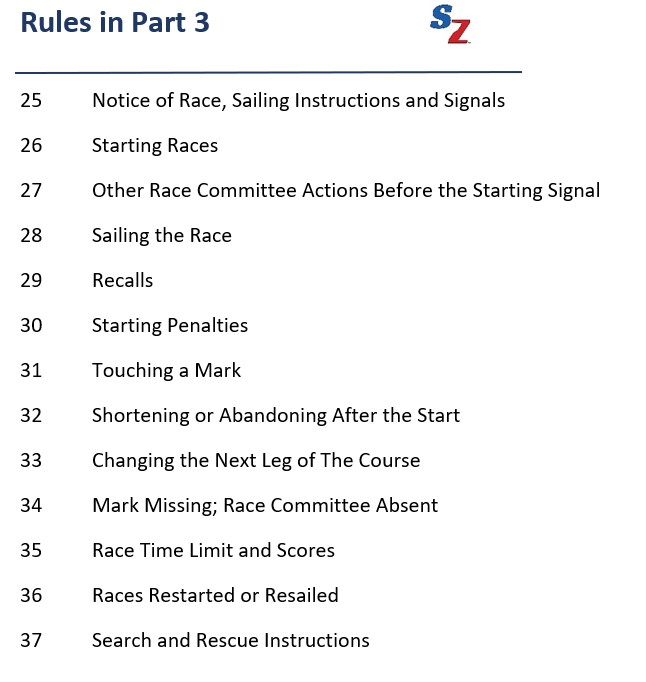
Part 3 (Rules 25 – 37) of the Racing Rules of Sailing covers conduct of a race. These rules are important for both sailors and the race committee. In this article, we’ll highlight the items important to sailors.
This series updates the Inland Lake Yachting Association (ILYA) #FairSailing initiative begun in 2018. In the update, we’ve incorporated the 2021-2024 changes and added a video version of the article.
Video – Conduct of a Race
Rule 25 – Notice of Race, Sailing Instructions and Signals
We won’t go over Rule 25 in detail here, since it applies more to the race committee than to sailors. The most important part for sailors is Rule 25.1, which states that “the notice of race [NoR] shall be made available to each boat that enters an event before she enters . The sailing instructions [SIs] shall be made available to each boat before the race begins.”
The NoR and SIs have always been important to sailors. With the 2021-2024 rules changes, the NoR becomes even more important:
- The NoR can now contain some information that was previously required in the SIs. If so, this information won’t be repeated in the SIs. Appendix J contains an updated list of NoR and SI content.
- The organizers must make the NoR available before boats enter the event. Previously it was only required to be available before the race. The wording in red above shows the change.
The take-away for sailors is to read both the NoR and SIs .
Rule 26 – Starting Races
“Races shall be started by using the following signals. Times shall be taken from the visual signals; the absence of a sound signal shall be disregarded.”

As a sailor, how do you determine when the warning signal will occur? Here are several possibilities:
- Many race committees make the warning signal at the exact time shown in the NoR for the race start, without any alerts to sailors.
- Some race committees use a series of sounds as an assembly signal one minute before the warning. This is optional and not specified in the rules.
- Some races committees will give announcements over the communications channel when they are about to sound the warning signal.
- For postponements, the warning signal signal occurs one minute after the postponement flag (AP) is lowered. See the Race Signals page of the rulebook.
- For general recalls, the warning signal occurs one minute after the the general recall flag (first substitute) is lowered. See Rule 29.2.
Rule 28 – Sailing the Race
“28.1 A boat shall start , sail the course and then finish . While doing so, she may leave on either side a mark that does not begin, bound or end the leg she is sailing. After finishing she need not cross the finishing line completely. 28.2 A boat may correct any errors in sailing the cours e, provided she has not crossed the finishing line to finish .”
Rule 28 Definitions
Start . A boat starts when, her hull having been entirely on the pre-start side of the starting line at or after her starting signal, and having complied with rule 30.1 if it applies, any part of her hull crosses the starting line from the pre-start side to the course side.
Finish . A boat finishes when, after starting, any part of her hull crosses the finishing line from the course side. However, she has not finished if after crossing the finishing line she (a) takes a penalty under rule 44.2, (b) corrects an error in sailing the course made at the line, or (c) continues to sail the course .
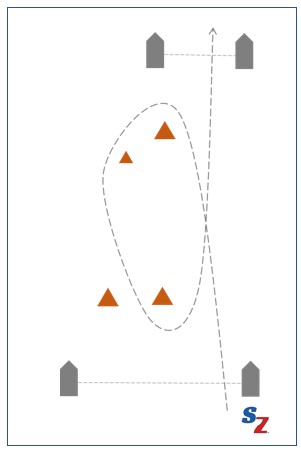
Sail the Course. A boat sails the course provided that a string representing her track from the time she begins to approach the starting line from its prestart side to start until she finishes , when drawn taut, (a) passes each mark of the course for the race on the required side and in the correct order (b) touches each mark designated in the sailing instructions to be a rounding mark , and (c) passes between the marks of a gate from the direction of the course from the previous mark .
Changes and Key Points
- For sailors this change means that the race committee can score you NSC without protesting you and holding a hearing. in the old rules, the RC would have had to protest you for breaking Rule 28.
- You may only find out about this when the scores are posted.
- The definitions of start and finish were revised to state that a boat starts or finishes when any part of the hull crosses the line. Crew and equipment were removed. These changes were made throughout the rules.
Rule 30 – Starting Penalties
30.1 – i flag rule.

“If flag I has been displayed, and any part of a boat’s hull is on the course side of the starting line or one of its extensions during the last minute before her starting signal, she shall sail across an extension so that her hull is completely on the pre-start side before she starts .”
30.2 – Z Flag Rule

“If flag Z has been displayed, no part of a boat’s hull shall be in the triangle formed by the ends of the starting line and the first mark during the last minute before her starting signal. If a boat breaks this rule and is identified, she shall receive, without a hearing, a 20% Scoring Penalty calculated as stated in rule 44.3(c). She shall be penalized even if the race is restarted or resailed, but not if it is postponed or abandoned before the starting signal. If she is similarly identified during a subsequent attempt to start the same race, she shall receive an additional 20% Scoring Penalty.”
30.3 – U Flag Rule
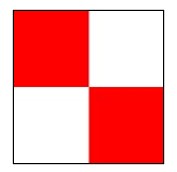
“If flag U has been displayed, no part of a boat’s hull shall be in the triangle formed by the ends of the starting line and the first mark during the last minute before her starting signal. If a boat breaks this rule and is identified, she shall be disqualified without a hearing, but not if the race is restarted or resailed.”
30.4 – Black Flag Rule

“If a black flag has been displayed, no part of a boat’s hull shall be in the triangle formed by the ends of the starting line and the first mark during the last minute before her starting signal. If a boat breaks this rule and is identified, she shall be disqualified without a hearing, even if the race is restarted or resailed, but not if it is postponed or abandoned before the starting signal. If a general recall is signaled or the race is abandoned after the starting signal, the race committee shall display her sail number before the next warning signal for that race, and if the race is restarted or resailed she shall not sail in it. If she does so, her disqualification shall not be excluded in calculating her series score.”
Other than removing “crew or equipment,” there were no significant changes to Rule 30 for 2021-2024.
Rule 30 Questions
- The race committee posted both a Z flag and an I flag at the preparatory signal. Immediately after the start, the race committee signals an individual recall and hails your number.
What must you do to start properly? How will your score for the race be determined? Answers
- The race committee posted a U flag at the preparatory signal. Five seconds before the start, you are over the line.
If the race committee subsequently re-starts the same race, are you still disqualified? Answer
- The race committee posted a Black flag at the preparatory signal. 30 seconds before the start, the race committee identifies your boat as being over the line.
If the race committee signals a general recall, and re-starts the race, are you still disqualified? Answer
Rule 31 – Touching a Mark
“While racing , a boat shall not touch a starting mark before starting , a mark that begins, bounds or ends the leg of the course on which she is sailing, or a finishing mark after finishing .”

Rule 31 Key Points
- Rule 44.1 requires you to take a one-turn penalty when you break rule 31.
- No changes to Rule 31 for 2021-2024.
Rule 31 Questions
- When rounding a mark, your rudder contacts the mark’s anchor line but the mark itself never touches any part of the boat.
Does this break Rule 31? Answer
- You accidentally contact the offset mark while sailing upwind toward the windward mark. (You have not yet rounded the windward mark.)
Rule 32 – Shortening or Abandoning after the Start

32.1 “After the starting signal, the race committee may shorten the course (display flag S with two sounds) or abandon the race (display flag N, N over H, or N over A, with three sounds),
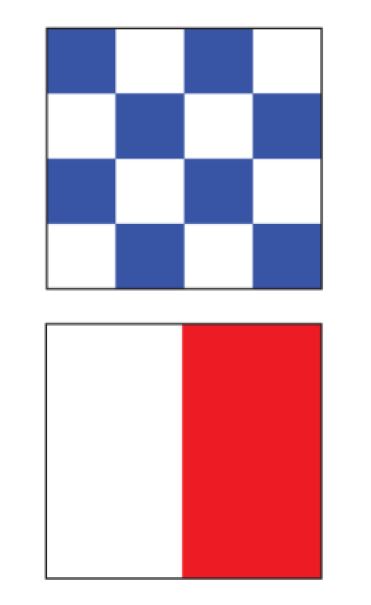
(a) because of foul weather,
(b) because of insufficient wind making it unlikely that any boat will finish within the race time limit,
(c) because a mark is missing or out of position, or
(d) for any other reason directly affecting the safety or fairness of the competition.
In addition, the race committee may shorten the course so that other scheduled races can be sailed, or abandon the race because of an error in the starting procedure. However, after one boat has started , sailed the course and finished within the time limit, if any, the race committee shall not abandon the race without considering the consequences for all boats in the race or series.
32.2 If the race committee signals a shortened course (displays flag S with two sounds), the finishing line shall be,
(a) at a rounding mark , between the mark and a staff displaying flag S;
(b) a line the course requires boats to cross; or
(c) at a gate, between the gate mark s.
The shortened course shall be signaled before the first boat crosses the finishing line.”
Rule 32 Questions
- You are sailing upwind towards the windward mark. The race committee displays the S flag with two sounds.
Where should you look for the finishing line? Answer
- You are sailing downwind towards the leeward gate marks. The race committee displays the S flag with two sounds.
Rule 33 – Changing the Next Leg of the Course
“While boats are racing , the race committee may change a leg of the course that begins at a rounding mark or at a gate by changing the position of the next mark (or the finishing line) and signaling all boats before they begin the leg. The next mark need not be in position at that time.

(a) If the direction of the leg will be changed, the signal shall be the display of flag C with repetitive sounds and one or both of
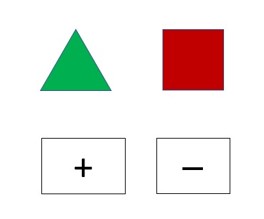
(1) the new compass bearing,
(2) a green triangle for a change to starboard or a red rectangle for a change to port.
(b) If the length of the leg will be changed, the signal shall be the display of flag C with repetitive sounds and a ‘–’ if the length will be decreased or a ‘+’ if it will be increased.
(c) Subsequent legs may be changed without further signaling to maintain the course shape.”
Rule 37 – Search and Rescue Instructions
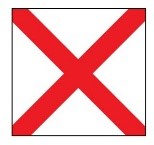
“When the race committee displays flag V with one sound, all boats and official and support vessels shall, if possible, monitor the race committee communication channel for search and rescue instructions.”
Rule 37 was added to the 2021-2024 rules, along with the Code flag V.
World Sailing Cases of Interest – Conduct of a Race
65 – When a boat knows she has broken the black flag rule she is obliged to retire promptly.
96 – When after a general recall, a boat learns from seeing her sail number displayed that she has been disqualified under Rule 30.4 and believes the race committee has made a mistake, her only action is not to start and seek redress.
129 – When the course is shortened at a rounding mark, the mark becomes a finishing mark. Rule 32.2(a) permits the race committee to position the vessel displaying flag S at either end of the finishing line.
Related Content:
SailZing – Racing Rules Category SailZing race signals quiz and worksheet World Sailing Racing Rules 2021-2024
Related Posts

2017-2020 Racing Rules of Sailing: 8 Key Changes
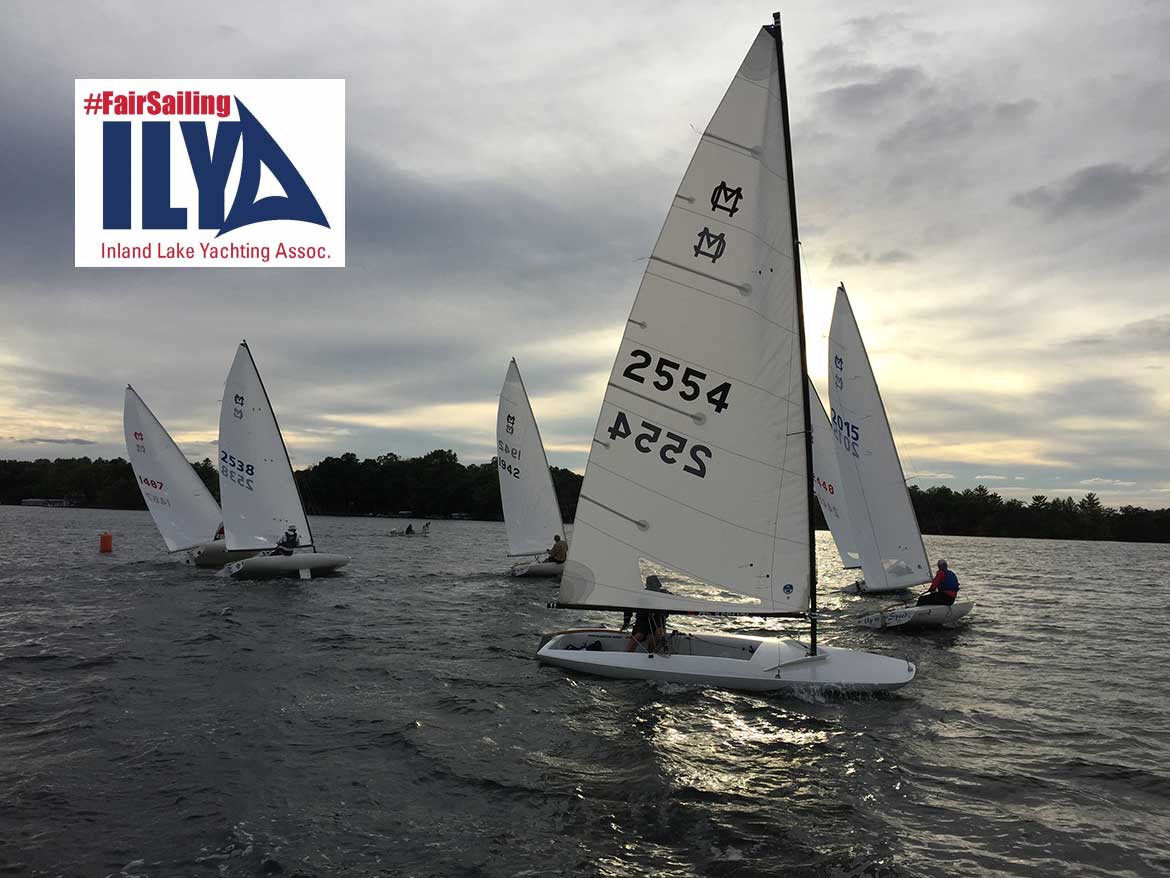
ILYA #FairSailing Initiative Racing Rules Quiz – Level I
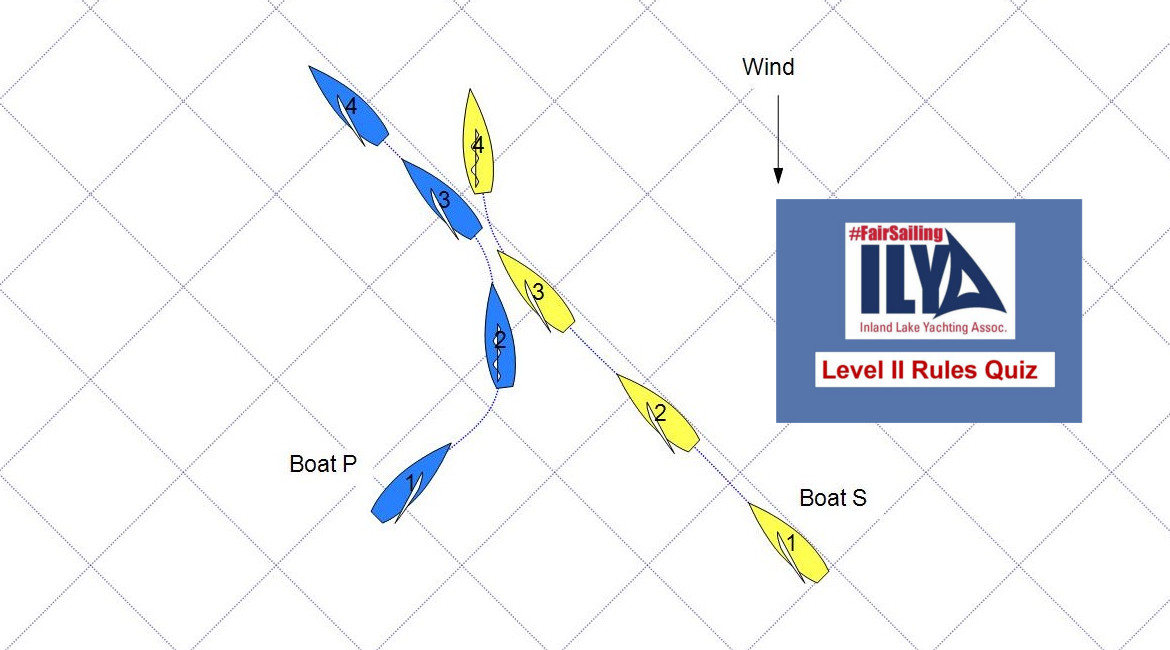
ILYA #FairSailing Initiative Racing Rules Quiz – Level II
Leave a comment cancel reply.
You must be logged in to post a comment.
This site uses Akismet to reduce spam. Learn how your comment data is processed .

Set Sail to Victory: Mastering Sailboat Racing Flags and Signals
Sailboat racing is a thrilling and challenging sport that requires skill, strategy, and knowledge of sailing rules and regulations. One of the essential components of sailboat racing is the use of flags and signals to communicate important information to the sailors.
Sailboat racing flags and signals are a standardized system used to convey messages about the course, starting times, penalties, and other critical information. In this article, we will explore the various sailboat racing flags and signals and their importance in the sport.
The Importance of Sailboat Racing Flags and Signals
Sailboat racing flags and signals are a set of visual cues used to communicate important information to sailors during a race. These signals can indicate the start and end of a race, changes in wind direction, or other important information that can affect a sailor’s strategy.
Understanding these signals is critical for any sailor who wants to compete in a sailboat race. Some common sailboat racing flags and signals include the “preparatory” flag, which indicates the start of the race is imminent, and the “postponement” flag, which indicates a delay in the start of the race.
Sailboat racing flags and signals are essential to the smooth and safe conduct of sailboat races. Without these flags and signals, sailors would be unable to navigate the race course safely or understand the starting times, course changes, or penalties.
Flags and signals provide a standardized system of communication that ensures that all sailors have the same information at the same time. This, in turn, promotes fair competition and ensures that all sailors have an equal opportunity to win.
The Basic Sailboat Racing Flags and Signals
The World Sailing ( WS ) is the world governing body for the sport of sailing (until 14 November 2015 named as International Sailing Federation or ISAF) has established a standardized system of sailboat racing flags and signals that are used worldwide. These flags and signals communicate essential information about the race, such as the starting times , course changes , penalties , and finish line . Below are the most common sailboat racing flags and signals:
The Preparatory Signal
The preparatory signal is the first signal made before the start of a sailboat race. This signal indicates that the race is about to start and that the boats should be prepared to start racing. The preparatory signal is usually made 5 to 10 minutes before the start of the race, depending on the size and type of race.
During the preparatory signal, the race committee displays the preparatory flag, which is a solid white flag with a blue horizontal stripe. The preparatory flag is displayed until the starting signal is made. Boats that cross the starting line before the starting signal is made are considered to have started early and may be penalized.
The Starting Signal
The starting signal is the second signal made in a sailboat race. This signal indicates that the race has officially started, and the boats can begin racing. The starting signal is usually made immediately after the preparatory signal, although there may be a delay if conditions are not suitable for racing.
The starting signal is made using the starting gun or horn. Boats must cross the starting line after the starting signal is made, or they will be considered to have started late and may lose valuable time.
The General Recall Signal
The general recall signal is made when the race committee determines that the starting sequence has not been fair or equal for all boats. This signal indicates that the race will be restarted.
During the general recall signal, the race committee displays the first substitute flag, which is a blue and white flag with a blue square in the center. Boats must return to the starting line and prepare to start again.
The Individual Recall Signal
The individual recall signal is made when a specific boat is identified as starting early. This signal indicates that the identified boat must return to the starting line and start again.
During the individual recall signal, the race committee displays the X flag, which is a black flag with a white square in the center. The identified boat must return to the starting line and start again after all other boats have started.
The Postponement Signal
The postponement signal is made when conditions are not suitable for racing. This signal indicates that the start of the race will be delayed until conditions improve.
During the postponement signal, the race committee displays the AP flag, which is a solid blue flag. Boats must return to the starting area and wait for further instructions.
The Abandonment Signal
The abandonment signal is made when conditions become too dangerous for racing. This signal indicates that the race will be abandoned, and all boats must return to shore.
During the abandonment signal, the race committee displays the N flag, which is a solid black flag. Boats must stop racing and return to shore immediately.
The Shortened Course Signal
The shortened course signal is made when conditions are not suitable for completing the full race course. This signal indicates that the race course will be shortened to ensure the safety of the boats and sailors.
During the shortened course signal, the race committee displays the S flag, which is a solid white flag with a blue square in the center. Boats must complete the shortened course and cross the finish line.
The Finish Signal
The finish signal is the final signal made in a sailboat race. This signal indicates that the race is over, and the boats have completed the race course. The finish signal is usually made when the boats cross the finish line.
During the finish signal, the race committee displays the finishing flag, which is a solid white flag with a blue vertical stripe. Boats must cross the finish line and complete the race. The boats are then ranked based on the order in
Additional Sailboat Racing Flags and Signals
In addition to the basic sailboat racing flags and signals, there are other flags and signals used in sailboat racing. These flags and signals communicate additional information about the race, such as penalties and rule enforcement. Below are some additional sailboat racing flags and signals:
The Penalty System
In sailboat racing, the penalty system is an important mechanism to ensure fair play and discourage cheating. The penalty system involves the use of penalty turns, which is a requirement for a boat to make a 360-degree turn as a result of committing a rule violation. The penalty turns must be completed as soon as possible, and failure to do so will result in further penalties.
The penalty system is signaled by the display of the “yellow flag” by the race committee boat. This flag is accompanied by a horn blast, which signifies that a penalty has been given to a boat. If a boat receives a penalty, it must complete the penalty turns as soon as possible.
The Black Flag Rule
The black flag rule is a sailing rule that is used to discourage boats from starting too early. Under this rule, if a boat is over the starting line when the starting signal is given, it is disqualified from the race.
The black flag is signaled by displaying a black flag with a white square in the middle. This flag is displayed with the one-minute signal before the start of the race. If a boat is over the starting line when the race starts, and the black flag is displayed, the boat is disqualified.
The Blue Flag Rule
The blue flag rule is used to indicate that a boat is in danger and requires assistance. The blue flag is displayed by a boat that requires assistance, and this signal must be acknowledged by other boats in the race.
The blue flag is displayed by a boat in distress or requiring assistance, and other boats must immediately make way for the distressed boat. If a boat fails to acknowledge the blue flag signal, it may be subject to penalties.
The Red Flag Rule
The red flag rule is used to s ignal that a race has been stopped due to an emergency situation . The red flag is displayed by the race committee boat, and all boats must immediately stop racing.
If the red flag is displayed, all boats must immediately stop racing and proceed to the designated area. The race will be restarted once the emergency situation has been resolved.
Sailboat racing flags and signals are a crucial part of the sport of sailboat racing. They provide a standardized system of communication that ensures fair competition and safe racing. Understanding these flags and signals is essential for all sailors who want to compete in sailboat racing.

What happens if a boat does not follow the sailboat racing flags and signals?
If a boat does not follow the sailboat racing flags and signals, it may be penalized or disqualified from the race.
Are sailboat racing flags and signals the same worldwide?
Yes, sailboat racing flags and signals are standardized worldwide by the International Sailing Federation (ISAF).
What is the penalty for starting early in sailboat racing?
The penalty for starting early in sailboat racing is usually a 360-degree turn penalty.
How are safety rules enforced in sailboat racing?
Safety rules are enforced in sailboat racing using the red flag rule. If a boat is identified as posing a safety risk, it will be disqualified from the race.
Can sailboat racing flags and signals change during a race?
Yes, sailboat racing flags and signals can change during a race due to weather conditions or other safety concerns.
- Recent Posts
- The Role of Cargo Ships in Global Trade – August 22, 2024
- Report: Yang Ming’s YM Mobility Explosion at Ningbo-Zhoushan Port – August 9, 2024
- Understanding Drillships: Types, Key Features and Advancements – August 1, 2024
About the author
I worked as an officer in the deck department on various types of vessels, including oil and chemical tankers, LPG carriers, and even reefer and TSHD in the early years. Currently employed as Marine Surveyor carrying cargo, draft, bunker, and warranty survey.
Latest posts

The Role of Cargo Ships in Global Trade
Contents show Volume of Goods Transported by Sea Key Global Trade Routes Economic Impact of Maritime Shipping Types of Cargo Commonly Transported Environmental Considerations Conclusion Cargo ships are the lifeline […]

What Are AGVs? Automation Becoming Increasingly Common in Seaports
What are AGVs? Automated guided vehicles can minimize the troubles of manual operations and enhance seaport operations.

Report: Yang Ming’s YM Mobility Explosion at Ningbo-Zhoushan Port
A massive explosion occurred on the container ship YM Mobility while it was berthed at the Ningbo-Zhoushan Port in China

- Club Finder
| Search |
|---|
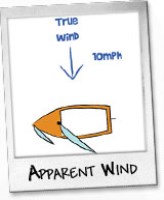
Racing - Starting Signals
Go To: Sailing - Racing
Posted on 20 April 2009 14:56
Wouldn't things be so simple if we all just lined up on the start line, someone blew a whistle, and we started? It would be fantastic! However, due to the way boats work, this can never happen. It's easy enough to get people lined up on a running track and send them on one signal, but it doesn't work so well with boats, water, and wind.
So how do we start races? Depending on the type of race, size of the event etc, there are different ways. Some small clubs might use just a sound signal at set intervals outlined in the race briefin; larger clubs might use a flag system with sound signals, which open events tend to use also. These are just some of the more common ways we're now going to look at.
Noise Signals
If you're only sailing with 5 or 6 other people, then it usually isn't worth going to the trouble of a full blown flag system to start races. In this situation, a whistle, hooter or other noise making device can be used to signal race starts. These are usually set off at predetermined intervals, known as the starting sequence, which we will talk about in a moment.
At larger events, a whistle or noise may still be used, usually in conjunction with a flag system (see next section). In this case, the whistle isn't intended as the only signal, it's also used to draw attention to the flags changing.
Larger events or serious club racing will typically use flags to signal starts. Somewhere near the race start, either on the bank, the starters building, or a large enough boat on the start line, will be a mast, that can have small signal flags hoisted and dropped from it. There are a number of important flags, which we'll discuss first before we talk about how they are used:
There are seven main flags you need to know:
Preparatory P . This is an indication that the starting sequence is in progress, shown in Diagram 1. This is raised during the starting sequence to indicate that the start is in progress. It is lowered 1 minute before the start. We'll discuss the full order of the flags later.
Class Flag . Each boat class will have a class flag specific to that class. This can be used in the starting sequence for single class races.
Postponement . This flag is used to indicate that the race start has been postponed, and any competitors should stand by in the immediate sailing area, unless otherwise instructed, shown in Diagram 2.
Individual Recall X : This flag, known as the cross or x, is used to indicate that an individial boat (or more than one) crossed the line early and must return (see Diagram 3). See the next section on recalls for more information.
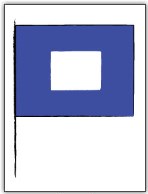
Diagram 1, Preparatory Flag.
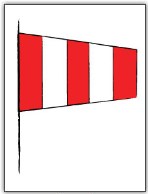
Diagram 2, Postponement Flag
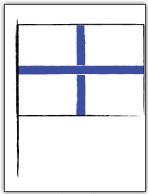
Diagram 3, Individual Recall Flag
General Recall : this flag indiciates the race start will be restarted, as too many boats were over the start line (Diagram 4).
Disqualification : this indicates that a particular boat (or boats) have been disqualified from the race (see Diagram 5).
1 Minute Rule : this flag tells you that if you are On Course Side within 1 minute of the start, you will be disqualified (see Diagram 6).
Bear in mind that events with long start lines (Optimist events can be upwards of 200 boats) may not use sound signals to accompany flags, because not everyone would be able to hear it - in this case, flags become much more important, and you can't get away without understanding them properly!
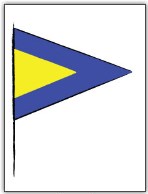
Diagram 4, General Recall Flag.
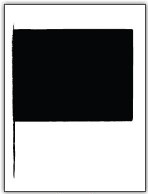
Diagram 5, Disqualification Flag
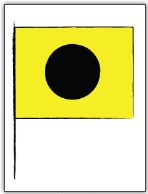
Diagram 6, 1 Minute Rule Flag
Recalls are used if someone is over the start line before the race has started. You saw the flags for this in the previous section - and now we'll talk about them. There are different types of recall available for the race officer to use, usually at either his/her discretion, within the rules of the club.
Individual Recall - this signal is raised when one (or more) people are over the start line before the race starts (known as OCS, or On Course Side); the Code Flag "X" is used, with a single sound signal. Due to the size of start lines, it's usually up to you to realise you were over the start line, and do something about it! In this situation, you must cross back over the start line, get behind it again, and then cross again when the race has started. This means if you cross the start line a few seconds early before the start, you must go back and recross it, and waste valuable time.
General Recall - this is used to signal that many people were over the start line, usually too many to use the individual recall signal. In this situation, everyone must return and the race will usually be restarted. The first substitute general recall flag (Diagram 4) is flown, with two sound signals, then lowered with one sound signal one minute before the start sequence begins again.
Disqualification Flag - this indicates that a particular boat is disqualified, as shown in Diagram 5.
Round the Ends - if Code Flag I is flown instead of Code Flag P, then the starting sequence will be the same as usual, and signifies that any boat that's OCS (on course side) within 1 minute of the start must go around the ends of the line to restart. This is not as common as the others.
Starting Sequences
What's a starting sequence? When you're watching track events, such as the 100m, you'll notice the starter calling something along the lines of "ready... set... go!". This is a starting sequence.
How does this apply to sailing? Well because we're in bigger pieces of kit that are ever so slightly more tricky to control than a single running athlete, we need more time to prepare. Our starting sequences for sailing events are usually in the range of 5-10 minutes, and we have a signal at pre-determined intervals during that time, known as the sequence, to help us prepare (because not everyone wears a fancy countdown style race watch).
Probably the most common starting sequence would be 5, 4, 1, go. In this sequence, you would hear a sound signal or whistle blast at 5 minutes, then 4 minutes, then 1 minute, then finally on 0 minutes, or race start. Clearly, you must find out before the race starts which sequence is being used, otherwise you could easily end up starting your race on minute 1, or not being ready at the race start.
We talked about flag signals earlier - the start sequence usually incorporates the flags. Using the 5, 4, 1, go sequence as an example, you would start at 5 minutes with the class flag raised. At 4 minutes, flag clas flag would stay up, and the preparatory (P) flag will join it. At 1 minute, the preparatory flag is lowered, leaving only the class flag raied. Then finally, at 0 minutes, the class flag will come down, and this signals the race start, unless any recall flags go up.
So as you can see, starting signals can be a tricky business. However, you can make it much easier for yourself by finding out the sequence and what to expect in terms of signals before you get on the water - and you can usually find this out by badgering the race officer as he's busy making final adjustments to the course!
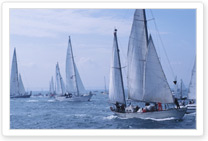
Fig 1. Get all the gear ready

Home - About Us - Sailing - Club Finder - Links - Link To Us - Join Us - Contact Us - Classes - Reviews - Photo Galleries - Glossary - Knots
Disclaimer - Privacy Policy
Connects to devices by Bluetooth
*requires Bluetooth 4.0
Controlled by SailBot App
SailBot products are controlled by the SailBot App available for free from the App Store and Google Play Store. Operation is extremely simple and convenient, and software is always up to date! New features are automatically added in app updates.
SailBot products are the only automated starting horns that allow you to edit your starting sequences with a built-in sequence editor! Choose from and edit many included ISAF sequences or create your own.
Connects by Bluetooth 4.0
Save your race committee's ears by placing SailBot outside of the boat cockpit. With long-range Bluetooth Low Energy, the unit can be placed anywhere on the boat and is easily controlled by the app on the iDevice.
SailBot is cross platform and our free app is available in both the App Store and Google Play Store. Click the badges here to go to your respective store.
Read all about our exciting Version 2.0 app in our blog post here .
The most flexible and advanced sailboat race starting horn
Audible signal hassles are a thing of the past. let your race committee focus on the on-water action and visual signals and leave the sail race start timing and audible signaling to your sailbot., sailbot makes it simple.
Sailbot is simply the most flexible and convenient way to automate the Race Committee audible signals at the start of any sailing race. It is an automatic sailboat race starter system consisting of our self-contained horn unit in conjunction with our free app running on your iPhone, iPad, or Android device. Sailing schools, yacht clubs, and sailing teams will love the ease of use and durability of construction. Compact, robust, reliable and ready for action; SailBot was designed from the ground up to be an integral part of any RC toolkit.
Make your Race Committee job easier by automating your starting sequences today! SailBot is a self-contained and portable unit that connects to your mobile device by Bluetooth technology. Horns are automatically fired at the proper time during a start sequence, freeing the RC to do other things.
- Long Battery Life
- iPhone 4S and newer
- Long-range Bluetooth Low Energy
- Battery level indicator in app
- Loud (135dB)
- Can be mounted remotely
- 100+ Start sequences per charge
- iPod Touch 5th gen and newer
- Simple Bluetooth connection with no passcode
SailBot Starter
Controlled by an App
SailBot is the only automatic sailboat race starting horn that offers custom start sequence editing and modification. Choose from one of the many included ISAF starting sequences, modify them or create your own. The options are limitless.
All software for controlling the horn is contained in the app on your phone or tablet so updates are automatic and your device is always up to date. Say goodbye to hard-wired sequences forever.
Placing the controlling software on a mobile device allows flexibility and future expansion that other solutions will never be able to match. Go ahead, install the free app from the App Store and Google Play now and see for yourself how easy it is to have perfect, effortless starting sequences!
Designed with Race Committees in Mind
With no pairing codes it could not be simpler to setup and go. Place the SailBot starter anywhere on your boat away from Race Committee ears, turn it on, open the app and tap "Connect" and you are ready to go!
You can choose from a number of predefined sequences or program your own. Watch this video to get an idea of how simple it really is to have perfect audible sequence signals.
- Share this:
GET COVERED FOR 2 YEARS
We get it. The marine environment and volunteers can be rough on your gear. SailBot Care provides two years of accidental damage coverage.
Experts puzzle over why Bayesian yacht sank. Was it a 'black swan event'?

The Bayesian set off on a leisurely cruise around Italy's southern coast on a sunny day in late July.
The luxurious super yacht − which boasted one of the largest masts in the world and carried a crew of business moguls, including British tech tycoon Mike Lynch and his family and a chair of Morgan Stanley − set sail from the Amalfi Coast, bound for Sicily.
Less than a month later, the ship had sunk 160 feet under the water , leaving its cook dead and six of its passengers, including at least two Americans, missing and prompting a massive search that has drawn international attention.
Now, experts are trying to piece together why in the early hours Monday the Bayesian was quickly pulled under the waves amid a storm that saw at least one tornado spin up over the water.
Breaking news to start your day smart. Sign up for USA TODAY's Daily Briefing newsletter.
A perfect storm led to Bayesian sinking, experts say
The combination of unlikely factors that could have contributed to the ship's fate constituted a "black swan event," Matthew Schanck, chairman of the Maritime Search and Rescue Council, told USA TODAY.
The Bayesian was well-built: A 2008 product of Italian ship maker Perini, it was constructed in accordance with international maritime standards and commercially certified by the U.K.'s Maritime and Coastguard Agency, according to Schanck.
The bout of bad weather that swept the area when the ship went down was also out of the ordinary in the northern Mediterranean, "which isn't renowned for prolonged, significant stormy weather," he said.
"The fact that those two elements have then resulted in the foundering of a super yacht is pretty extraordinary," Schanck said. "These things don't happen every day."
After the ship sank just before 5 a.m. local time, 15 people, including a 1-year-old, were pulled from the water. Some were rescued from a life raft by the crew of a ship docked nearby.
Ricardo Thomas, the ship's cook and a native of Antigua, was found dead, according to authorities.
As of Tuesday, six people were missing, including Lynch and his 18-year-old daughter. Several missing passengers were involved in Lynch's trial on fraud charges, including Jonathan Bloomer, a Morgan Stanley chair who served as his character witness, and one of Lynch's attorneys. Lynch, accused of fraud after he sold his company to electronics giant Hewlett-Packard, was acquitted of all charges weeks ago.
Who is Mike Lynch? UK entrepreneur among those missing after superyacht sinks off Sicily
Tornado formed over unusually hot water
Storms in the area that night may have whipped up a water spout, a tornado over the water , according to local meteorologists.
It was likely triggered by the water's unusual warmth, said Rick Shema, a certified consulting meteorologist who served in the Navy.
"The water spout was an uncommon occurrence," he said. "But again, these things happen, especially in warmer water."
At 83.7 degrees, water in the area was more than 3 degrees hotter than average on the day the Bayesian sank, likely the result of climate change, Shema said.
"Hurricanes can form at 80 degrees. This was almost four degrees higher than that," he said.
The water spout may have spun up when cooler air dropped from mountainous places nearby onto the hot water, he said. "A water spout is a vortex, basically like a tornado, spinning real fast, sucking up water and moisture as the column rises," he said.
Although water spouts only reach around 120 mph, as compared with tornadoes on land, which can reach up to 300 mph, "you don't need 200 mph to sink a ship," he said.
"Even an average tornado, 120 miles an hour, that's a lot of wind," he said, "which would heel the boat over for sure."
Water spouts spring up suddenly, Shema said. Before they strike, winds can be slow, but "once the water spout comes over, bam, it's on," he said.
Before sunrise, the ship's crew may not have seen the water spout coming. "The visibility was probably a big factor," he said.
With the windows of the yacht opened, as they likely were in the hot weather, the water spout could have triggered water that flooded through the portholes, Shema said, causing the ship to sink.
Tragedy strikes: Scramble to find survivors after Bayesian yacht sinks off Sicily coast
Search continues, but shift to recovery phase approaches
Italian authorities said the Bayesian was probably at anchor when the storm struck, meaning it couldn't maneuver and ride the waves, according to Mitchell Stoller, a captain and maritime expert witness. Other ships in the area that turned on their engines rode out the storm, he said.
"When you're at anchor and you see weather, you start your engine and you put the wind on the bow. You don't let it get on the side," he said.
Schanck said another key question concerns the position of the keel, a heavy weight underneath the boat that acts as a counterbalance to keep it upright, when the ship sank. When lifted, "that's going to affect the stability of the vessel, because, obviously, you've now raised the center of gravity of that vessel," he said.
The Bayesian was floating over 160 feet of water at the time, deep enough that the keel would likely be deployed. But the fact that "the vessel heeled over so heavily makes me question that," Schanck said.
The cause of the disaster may not be known until the ship can be examined in more detail, experts say. Prosecutors in a nearby town have already opened an investigation.
Schanck said investigators will have plenty to work with once the operation moves into a recovery phase.
"The vessel is intact and in good condition on the seabed," he said. "There's a lot of eyewitness accounts from other vessels in the area and the shore."
As the search entered its second day on Tuesday, the rescue effort may shift in that direction soon. "I suspect, later on, today or tomorrow, we'll probably see some mention of a recovery operation being stated," Schanck said.
The decision to would depend on whether rescuers find signs of life in the ship and air pockets or survivable spaces, Schanck said. At this point, survivors on the water's surface looks unlikely. "My professional opinion is that the casualties will be located within the vessel," he said.
"There is a risk versus benefit in all maritime search and rescue incidents," he said. "Where we start transitioning to a recovery phase, that line shifts."
Contributing: Reuters
Cybele Mayes-Osterman is a breaking news reporter for USA Today. Reach her on email at [email protected]. Follow her on X @CybeleMO.
- Work & Careers
- Life & Arts
- Ethics & Leadership
- Fact-Checking
- Media Literacy
- The Craig Newmark Center
- Reporting & Editing
- Ethics & Trust
- Tech & Tools
- Business & Work
- Educators & Students
- Training Catalog
- Custom Teaching
- For ACES Members
- All Categories
- Broadcast & Visual Journalism
- Fact-Checking & Media Literacy
- In-newsroom
- Memphis, Tenn.
- Minneapolis, Minn.
- St. Petersburg, Fla.
- Washington, D.C.
- Poynter ACES Introductory Certificate in Editing
- Poynter ACES Intermediate Certificate in Editing
- Ethics Training
- Ethics Articles
- Get Ethics Advice
- Fact-Checking Articles
- IFCN Grants
- International Fact-Checking Day
- Teen Fact-Checking Network
- International
- Media Literacy Training
- MediaWise Resources
- Ambassadors
- MediaWise in the News
Support responsible news and fact-based information today!
Fact check: What the Obamas and other Democratic speakers got right, wrong on Day 2 of the DNC
Former president barack obama and former first lady michelle obama energized convention attendees. here are some fact checks of their claims..
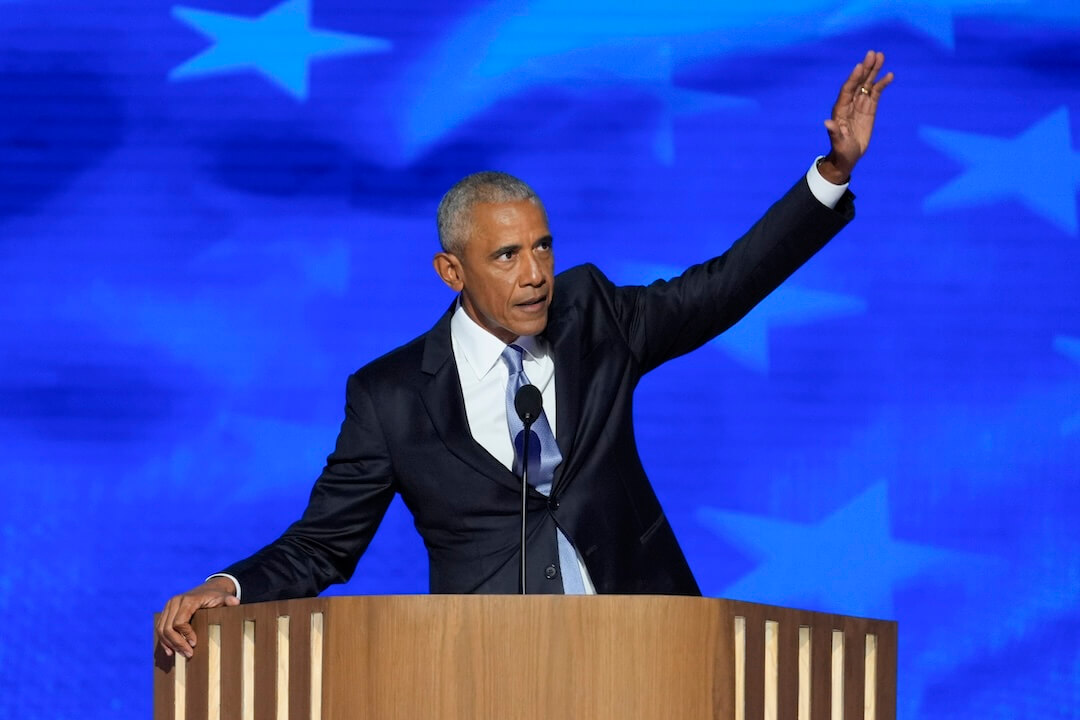
CHICAGO — Two decades after exploding onto the political scene at a different Democratic convention, former President Barack Obama, along with former first lady Michelle Obama, energized convention attendees here. The Obamas bestowed their support on nominee Kamala Harris, who aims to follow Obama as the nation’s second Black president.
Barack Obama began his address by praising outgoing President Joe Biden. “I am proud to call him my president, but I am even prouder to call him my friend,” Obama said of Biden, his former vice president.
Obama attacked Harris’ opponent, former President Donald Trump with zingers, once needling Trump for a “ weird obsession with crowd sizes ” (which also involved a suggestive hand gesture).
Barack Obama offered a few notes that rhymed with his career-making 2004 keynote address at the Democratic convention in Boston, in which he argued against the idea that there is a blue America and a red America.
Michelle Obama’s speech also offered some optimistic notes, including the notion that “hope is making a comeback” with Harris’ late entry into the presidential race as Biden’s would-be successor. But the former first lady’s remarks were sometimes even more acerbic than her husband’s.
She said, for example, that Trump had benefited from the “affirmative action of generational wealth” yet still managed to get “a second, third or fourth chance” while regularly “whining” or “cheating.” She also criticized Trump — an early spreader of the “birther” conspiracy theory that doubted that Obama was born in the U.S. — for having made Americans “fear us” as an educated, high-achieving couple who “happen to be Black.”
PolitiFact fact-checks politicians across the political spectrum. We also fact-checked the Republican National Convention in July. Read more about our process.
Here are some fact-checks of claims made during the convention’s second night.
Barack Obama: Under Joe Biden, the U.S. produced “15 million jobs, higher wages, lower health care costs.”
He’s right about jobs: The U.S. has added 15.8 million jobs since January 2021, when Biden was sworn in, though some of those represented the workforce return of workers the pandemic had sidelined.
Wages are up under Biden without factoring in inflation. But for his full tenure, wages have trailed inflation , which hit a four-decade high under Biden. Nevertheless, wages have outpaced inflation over the past two years, the past year and compared with before the pandemic.
Whether health care costs were lower overall is a trickier question, because there’s great variation from family to family and person to person. However, U.S. health care expenditures as a percentage of gross domestic product peaked during the pandemic in 2020 and have since fallen roughly to prepandemic levels. This represented the biggest sustained decline in decades.
Sen. Bernie Sanders, I-Vt.: “Unemployment was soaring” when Biden and Harris took office in January 2021.
Mostly False.
Sanders overstated the unemployment situation when Biden and Harris were inaugurated.
In April 2020, at the start of the COVID-19 pandemic, the unemployment rate surged to 14.8% as millions of Americans lost their jobs.
But by the time Biden took office in January 2021, the rate had fallen to 6.4%, and it continued to fall that year.
So it wasn’t “soaring” any longer, though the rate was still high by historical standards. It was lower than 6.4% for about six years prepandemic.
July’s unemployment rate is 4.3%.
Project 2025
Pennsylvania state Rep. Malcolm Kenyatta, D-Philadelphia: “And on Page 587, Project 2025 would cut overtime pay for hardworking Americans.”
Labor law experts have told PolitiFact that the Project 2025 plan would not eliminate overtime pay, but some workers could lose overtime protections if the plan’s proposals are enacted. It’s hard to say how many; it would depend on what’s enacted.
The document proposes that the Labor Department maintain an overtime threshold “that does not punish businesses in lower-cost regions (e.g., the southeast United States).” This threshold is the amount of money executive, administrative or professional employees need to make for an employer to exempt them from overtime pay under the Fair Labor Standards Act.
In 2019, the Trump administration finalized a rule that expanded overtime pay eligibility to most salaried workers earning less than about $35,568. The Biden administration raised that threshold to $43,888 beginning July 1, and that will rise to $58,656 on Jan. 1, 2025.
Project 2025’s proposal would return to the Trump-era threshold in some parts of the country. It’s unclear how many workers that would affect, but experts said some would presumably lose the right to overtime wages.
Other proposals in the plan include allowing some workers to choose to accumulate paid time off instead of overtime pay, to work more hours in one week and fewer in the next rather than receive overtime,,and require employers to pay overtime for working on the Sabbath.
Former first lady Michelle Obama: One of Trump’s proposals is “shutting down the Department of Education.”
Trump has said he would abolish the Education Department , a proposal he shares with Project 2025 , an agenda independently produced by some Trump allies.
It’s also something conservative groups have pushed for decades. The idea is to save a few essential functions and hand them to other agencies.
Trump’s education agenda also includes universal school choice, not spending federal dollars on schools that have vaccine mandates, allowing prayer in school, making principals directly elected by voters, subsidizing homeschooling and abolishing tenure for K-12 teachers.
Health Care
Sen. Chuck Schumer, D-N.Y.: “Democrats lowered prescription drug prices.”
Mostly True.
The Democrats did take historic steps to lower prices for Medicare recipients, but that’s a limited group of people and for many drugs that will take time.
In August 2022, Biden signed the Inflation Reduction Act, which allows the federal government to negotiate prices with drugmakers for Medicare. It passed without Republican support. The same law capped the monthly price of insulin at $35 for Medicare enrollees starting in 2023.
The Biden-Harris administration announced Aug. 15 that the federal government had reached agreements with all participating manufacturers on new negotiated drug prices for the first 10 drugs selected under the new law.
That will define the prices to be paid for prescriptions starting in 2026. For 2027 and 2028, 15 more drugs per year will be chosen for price negotiations. Starting in 2029, 20 more will be chosen a year.
New Mexico Gov. Michelle Lujan Grisham: Donald Trump and J.D. Vance want to “repeal the Affordable Care Act.”
Half True .
Trump’s new position doesn’t match his old one, but more details are needed.
In 2016, Trump campaigned on a promise to repeal and replace the Affordable Care Act. As president, Trump supported a failed effort to do just that. In the years since, he has repeatedly stated his intent to dismantle the health care law, including in campaign stops and social media posts throughout 2023.
In March, however, Trump walked back this stance. He wrote on Truth Social that he “isn’t running to terminate” the ACA but to make it “better” and “less expensive.”
Trump hasn’t said how he would do this, and health care policy experts said it’s difficult to know where he stands without a detailed plan. Experts identified an array of possible changes that could be executed under another Trump administration but said a sweeping repeal likely isn’t in the cards given a lack of political support.
Childhood Poverty
Sanders: “We cut childhood poverty by over 40% through an expanded child tax credit.”
Biden’s American Rescue Plan increased the child tax credit from $2,000 to $3,600 for children younger than 6 and to $3,000 for children 6 to 17.
We previously reported that supplemental poverty numbers showed poverty among all U.S. children dropped from 9.7% in 2020 to 5.2% in 2021, the Census Bureau said — a decline of 46%. About 5.3 million people were lifted out of poverty, including 2.9 million children.
The provision lapsed after December 2021, facing opposition from Republicans and Sen. Joe Manchin, now an independent, who argued that expanding the credit would worsen inflation.
When the expanded tax credit expired, supplemental child poverty spiked , rising from 12.1% in December 2021 to 17% in January 2022 — a 41% change.
Kamala Harris in a DNC video: Trump “wants to impose what is in effect a national sales tax on everyday products and basic necessities that we import from other countries. … (it) would cost a typical family $3,900 a year.”
Trump has said that he would propose a 10% tariff on all nondomestic goods sold in the U.S. Although tariffs are levied separately from taxes, economists say that much of their impact would be passed along to consumers, making them analogous to a tax.
The video’s figure about how much it will cost families is higher than current estimates.
The American Action Forum, a center-right think tank, has projected additional costs per household of $1,700 to $2,350 annually.
The Peterson Institute of International Economics, another Washington, D.C.-based think tank, projected that such tariffs would cost a middle-income household about $1,700 extra each year.
PolitiFact chief correspondent Louis Jacobson, senior correspondent Amy Sherman, staff writers Samantha Putterman, Sara Swann, Loreben Tuquero and Maria Ramirez Uribe contributed to this story.
Our convention fact-checks rely on both new and previously reported work. We link to past work whenever possible. In some cases, a fact-check rating may be different tonight than in past versions. In those cases, either details of what the candidate said, or how the candidate said it, differed enough that we evaluated it anew.
This fact check was originally published by PolitiFact , which is part of the Poynter Institute.
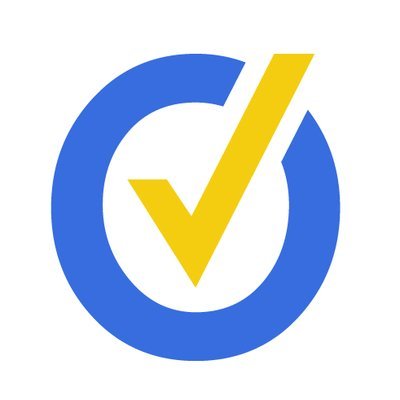
Opinion | Media reaction to Kamala Harris’ acceptance speech
It was a speech that wowed not only the obviously partisan crowd in Chicago, but many of the media commentators covering it.

Fact check: How accurate was Kamala Harris’ 2024 DNC speech in Chicago?
Harris leaned into several key policy themes: abortion rights, voting rights and support for Ukraine as it fights a continuing Russian invasion

LIVE: Fact-checking Kamala Harris’ 2024 DNC speech in Chicago
PolitiFact is live fact-checking the fourth and final night of the 2024 Democratic National Convention

Opinion | Who has been the DNC’s most surprising speaker so far?
It’s Stephanie Grisham, a former White House press secretary for Donald Trump who now supports Kamala Harris for president

Fact check: What Walz, Buttigieg, Clinton and others got right and wrong at Day 3 of the DNC
Minnesota Gov. Tim Walz accepted his party’s vice presidential nomination on the Democratic convention’s third night
You must be logged in to post a comment.
This site uses Akismet to reduce spam. Learn how your comment data is processed .
Start your day informed and inspired.
Get the Poynter newsletter that's right for you.

COMMENTS
Calling the O Flag the cheating flag is certainly a bit of a misnomer. The O Flag does, however, suspend Rule 42 of the Racing Rules of Sailing. Rule 42 is particularly notorious, as it bans pumping, rocking, ooching, sculling, and excessive maneuvering, all of which are methods to make your boat go substantially faster.
Abandonment Signals. N All races that have started are abandoned. Return to the starting area. The warning signal will be made 1 minute after removal unless at that time the race is abandoned again or postponed. N over H All races are abandoned. Further signals ashore. N over A All races are abandoned. No more racing today.
The race committee uses the same procedure for all starts--those with starting penalties (flag I, Z, Z and I, or black flag) and those without (flag P). This should reduce errors. There is less "wasted" time (5 minutes less) between the warning and the starting signals vs. starting classes at ten-minute intervals.
Return to the starting area. The warning signal will be made 1 minute after removal unless at that time the race is abandoned again or postponed. RACE SIGNALS The meanings of visual and sound signals are stated below. An arrow pointing up or down (np) means that a visual signal is displayed or removed. A dot (x) means a sound; five short
When at a boat's starting signal any part of her hull is on the course side of the starting line or she must comply with rule 30.1, the race committee shall promptly display flag X with one sound. The flag shall be displayed until the hull of each such boat has been completely on the pre-start side of the of the starting line or one of its extensions and until all such boats have complied with ...
Before the yacht race, boats must gather in the starting area. Skippers must steer clear of any collisions or rule-breaking. Next comes the starting sequence - with flags or sound signals showing the time until the race starts. Skippers must pay close attention to them. Once the final signal is given, the yachts race across the start line.
Sailing Race Signal Flags. RACE SIGNALS The meanings ofvisual and sound signals are stated below. An arrow pointing up or down (T l) means that a visual signal is displayed or removed. A dot means a sound; five short dashes - - - - ) mean repeti- tive sounds; a long dash (—) means a long sound. When a visual signal is displayed over a class ...
Sail races are governed with flags and sound signals to indicate flag changes. The flags used are taken from the International maritime signal flag set. During a race and for any signal concerning the race, these flags are defined in the Racing Rules of Sailing but the signal can be modified by the Sailing Instructions.. The raising (hoisting) or removing of a visual signal is accompanied by ...
The rules of Yacht Racing are found in the Racing Rules of Sailing (RRS) (which govern the sport of sailing on the water) and the Sailing Instructions Guide. The flags used are called "RRS Race Signals". They are revised and published every four years by World Sailing). The current edition is "The Racing Rules of Sailing 2017 - 2020".
Signals to start a race Display 25 - NOTICE OF RACE, SAILING INSTRUCTIONS AND SIGNALS 25.1 - The notice of race and sailing instructions shall be made available to each boat before a race begins. 25.2 - The meanings of the visual and sound signals stated in Race Signals shall not be changed except under rule 86.1(b).The meanings of any other signals that may be used shall be stated in the ...
Return to the starting area. The warning signal will be made 1 minute after removal unless at that time the race is abandoned today. again or postponed. RACE SIGNALS The meanings of visual and sound signals are stated below. An arrow pointing up or down (n p) means that a visual signal is displayed or removed. A dot (x) means a sound; five short
Preferred Start Boat Flag Layout Start Boat Signals Other Race Committee Signals before the Start Course (flag, pennant, course board, white/blackboard) Y Flag * AP, AP over Numeral 1, 2, 3 etc, AP over H, AP over A ** N, N over H, N over A ***
Think you know the race signals? Here are some activities to challenge yourself. We've updated the material to include the changes for the 2021-2024 racing rules of sailing - the V flag, blue flag, and orange flag were added. Race Signals Summary. Here's a summary of all the race signals, directly from the 2021-2024 rules. If needed ...
Return to the starting area. The warning signal will be made 1 minute after removal unless at that time the race is abandoned again or postponed. RACE SIGNALS The meanings of visual and sound signals are stated below. An arrow pointing up or down (↑↓) means that a visual signal is displayed or removed. A dot
Rule 37 - Search and Rescue Instructions. "When the race committee displays flag V with one sound, all boats and official and support vessels shall, if possible, monitor the race committee communication channel for search and rescue instructions.". Rule 37 was added to the 2021-2024 rules, along with the Code flag V.
The Starting Signal. The starting signal is the second signal made in a sailboat race. This signal indicates that the race has officially started, and the boats can begin racing. The starting signal is usually made immediately after the preparatory signal, although there may be a delay if conditions are not suitable for racing. The starting ...
Return to the starting area. The warning signal will be made 1 minute after removal unless at that time the race is abandoned again or postponed. RACE SIGNALS The meanings of visual and sound signals are stated below. An arrow pointing up or down (n p) means that a visual signal is displayed or removed. A dot (x) means a sound; five short dashes
Probably the most common starting sequence would be 5, 4, 1, go. In this sequence, you would hear a sound signal or whistle blast at 5 minutes, then 4 minutes, then 1 minute, then finally on 0 minutes, or race start. Clearly, you must find out before the race starts which sequence is being used, otherwise you could easily end up starting your ...
Return to the starting area. The warning signal will be made 1 minute after removal unless at that time the race is abandoned again or pos tpon ed. RACE SIGNALS The meanings of visual and sound signals are stated below. An arrow pointing up or down (↑ ↓) means that a visual signal is displayed or
visual signal is displayed over a class flag, fleet flag, event flag or race area flag, the signal applies only to that class, fleet, event or race area. 1982/7, 1996/4, 2004/1 US100 POSTPONEMENT SIGNALS AP Races not started are postponed. The warning signal will be made 1 minute after removal unless at that time the race is postponed again or
Sailbot is simply the most flexible and convenient way to automate the Race Committee audible signals at the start of any sailing race. It is an automatic sailboat race starter system consisting of our self-contained horn unit in conjunction with our free app running on your iPhone, iPad, or Android device.
It provides the sound signals to start races and voice countdowns for use on the racing yacht. The Free version contains a limited set of features and options; the Pro version has them all. Sailing Race Starts works especially well on phones and tablets, and has many features! Here are some of them: 5-minute RRS Rule 26 horn starts, 5-minute ...
RC sailing practiciants very offen set the warning, preparatory and starting moments with vocal warnings only. This is allowed by the changes of the appendix of the sailing rules: no visual signals are required unless specified in the sailing instructions. During the (preparatory) minute before the starting signal, additional sound or oral signals shall be made at ten-second intervals: 50 ...
The luxurious super yacht − which boasted one of the largest masts in the world and carried a crew of business moguls, including British tech tycoon Mike Lynch and his family and a chair of ...
The workshop has already completed basic training for 15 prisoners, four of whom will attend further training in Lewisham, starting this September. The scheme has drawn support from companies in ...
29 August to 8 September: Louis Vuitton Cup round-robin stage - all teams race each other twice, with the top four going through and the leading team choosing who they face in the semi-finals 14 ...
Good schools are heroin's best antidote Dundee, my home town, is now the drugs capital of Europe. Only expunging despair will turn matters around
That will define the prices to be paid for prescriptions starting in 2026. For 2027 and 2028, 15 more drugs per year will be chosen for price negotiations. Starting in 2029, 20 more will be chosen ...